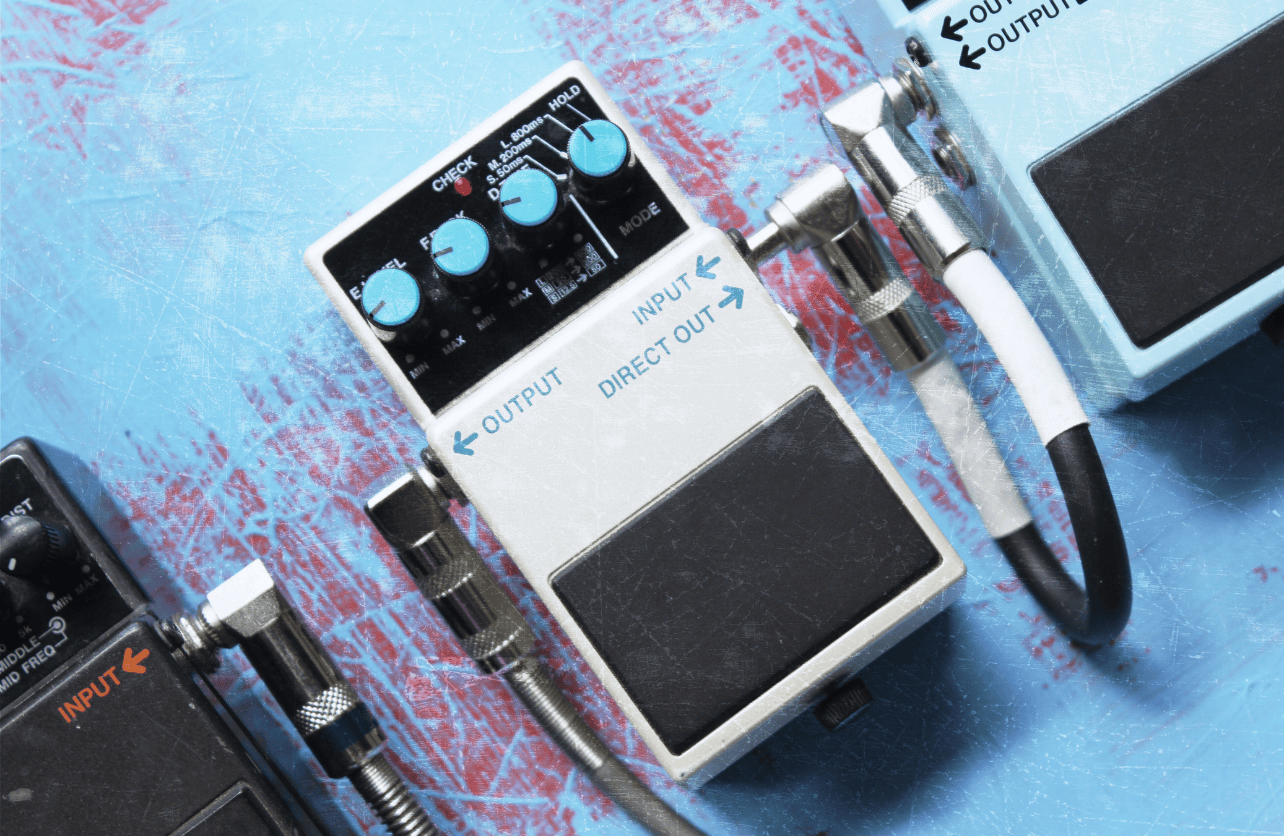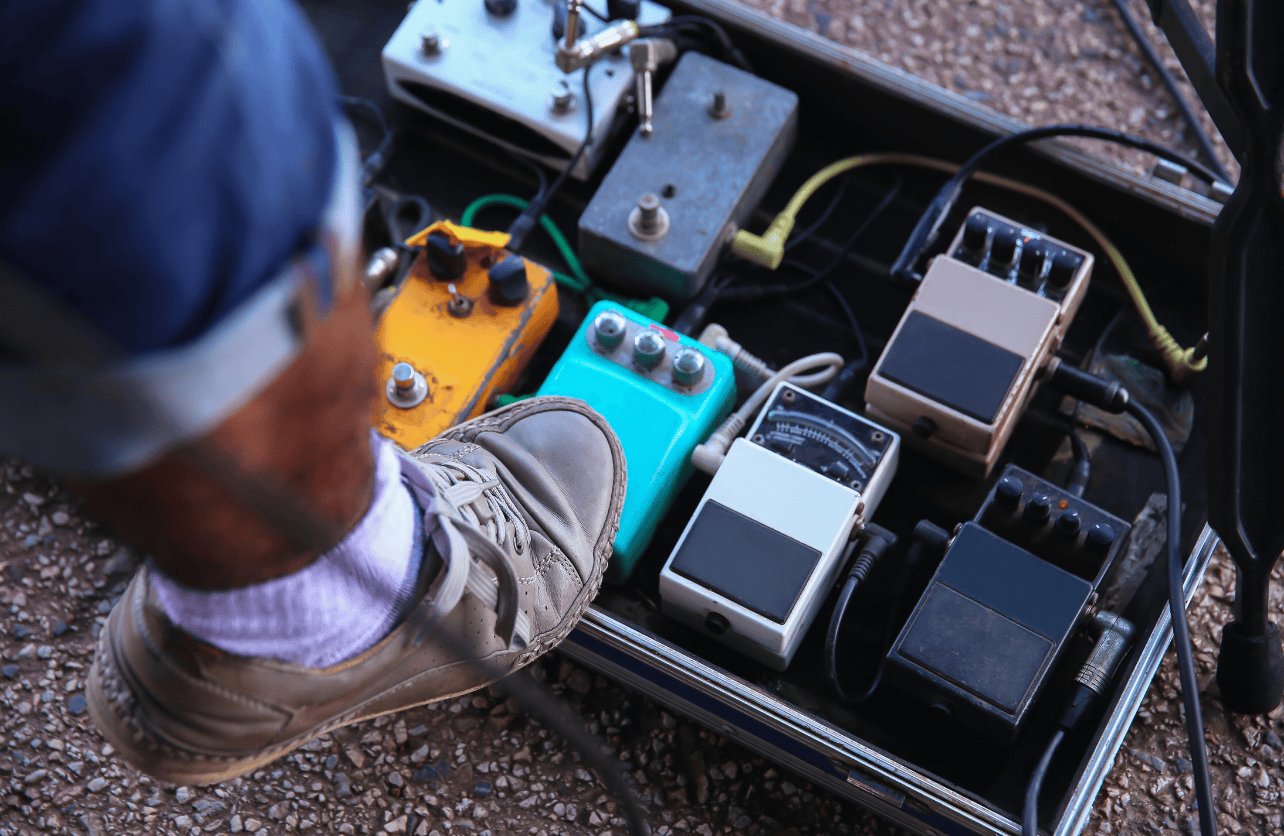How to Chain Guitar Pedals

For guitarists, pedal order can make or break the tone they’re striving to achieve. While there are no absolute rules, understanding the basics of how different effects interact can help you craft a sound that’s clean, dynamic, and uniquely yours. This guide breaks down the recommended order for chaining guitar pedals and explores how experimenting with placement can lead to creative tones.
The Basics of Pedal Order

The sequence in which you arrange guitar pedals impacts how they process your signal. Think of it as a flowchart: your guitar signal enters the first pedal, gets modified, and then passes to the next, accumulating changes along the way.
Here’s the standard pedal order most guitarists start with:
- Tuner
Placing your tuner at the very start of the chain ensures it receives the cleanest signal. This makes for more accurate tuning since it’s unaffected by effects like distortion or modulation. Chromatic tuners or strobe tuners are common choices for precision. - Dynamic Effects
Pedals like compressors and noise gates work best early in the chain, as they control the dynamics of your raw guitar signal.- Compressor: Smooths out volume inconsistencies, enhancing sustain.
- Noise Gate: Reduces unwanted hum or buzz from the guitar or other pedals.
- Filter Effects
Wah pedals and envelope filters come next, shaping the frequencies of your signal. Their impact is most noticeable when they’re fed a clean, unprocessed tone. A wah pedal, for example, creates a sweeping effect that can get muddied if placed after distortion. - Pitch Effects
Octave pedals, harmonizers, and pitch shifters follow filters. These effects adjust the pitch of your guitar and work best when they receive a clean, undistorted signal. - Gain-Based Effects
Overdrive, distortion, and fuzz pedals are the heart of many guitarists’ tones. These pedals add harmonic content and saturation to your signal.- Placing them after pitch effects ensures they amplify the altered pitch.
- Experimentation is key—some guitarists prefer fuzz before wah pedals for a vintage sound.
- Modulation Effects
Chorus, phaser, and flanger pedals are modulation effects that add movement and texture to your sound.- Placed after gain-based effects, they create rich, dynamic tones.
- For a swirling lead sound, try putting a phaser after your distortion.
- Time-Based Effects
Delay and reverb pedals typically come last in the chain.- Delay: Adds repeats of your signal to create a sense of space.
- Reverb: Simulates acoustic environments, from small rooms to vast halls.
- Placing these effects at the end ensures they don’t get distorted or modulated, preserving their clarity.
Why Order Matters
Each pedal influences how the next one processes the signal. For example:
- Placing distortion before delay amplifies the delays, creating a more ambient sound.
- Conversely, placing delay before distortion can muddy the repeats, as the distorted pedal treats each echo as a new input.
Understanding this chain reaction lets you manipulate your sound with precision.
Creative Experimentation
While the order above is a great starting point, breaking the rules can yield exciting results. Here are some ideas to try:
- Reverb Before Distortion: Creates a gritty, atmospheric texture.
- Delay Before Modulation: Adds an unpredictable, warbling character to repeats.
- Wah After Distortion: Produces a sharper, more pronounced sweep.
Tips for Building Your Pedalboard
- Start Simple: Begin with just a few essential pedals and gradually add more as you refine your tone.
- Use Patch Cables: Short cables reduce signal loss and keep your pedalboard tidy.
- Invest in a Power Supply: A reliable power supply minimizes noise and ensures consistent performance.
- Test Each Combination: Spend time experimenting with different orders to find what works best for your music.
Common Pitfalls to Avoid
- Too Many Effects: Overloading your chain can muddy your tone. Focus on quality, not quantity.
- Signal Loss: Long chains can weaken your signal. Consider using a buffer pedal to maintain clarity.
- Ignoring Noise: Check for hum or buzz when chaining pedals. It might indicate a grounding issue or incompatible power sources.
Conclusion
Chaining guitar pedals is an art form that blends technical know-how with creative exploration. By starting with the standard order and experimenting from there, you can unlock a world of tonal possibilities. Whether you’re chasing pristine clarity or chaotic textures, the way you arrange your pedals can make all the difference in your sound.
Your Trust, Our Core Commitment
At Rising Tech, earning and maintaining your trust is the cornerstone of our mission. We're dedicated to transparency, impartiality, and the relentless pursuit of truth in every article, review, and recommendation we publish. Our commitment to these principles ensures that you, our valued reader, are always equipped with reliable and unbiased information. Let us be your trusted guide in the ever-evolving world of technology.